Snake plants, known as Sansevieria but now classified as Dracaena, are some of the most resilient and low-maintenance houseplants. They flourish with minimal care, tolerate shade, and rarely have issues. However, coaxing a snake plant to flower is a puzzle for many. The common belief is that snake plants never bloom, but it’s certainly possible with the correct care!
Snake plants produce tall stalks adorned with delicate, sweet-smelling white or pale green flowers. Though uncommon, you can encourage blooming by using specific care strategies. If your snake plant has never flowered, there might be underlying reasons.
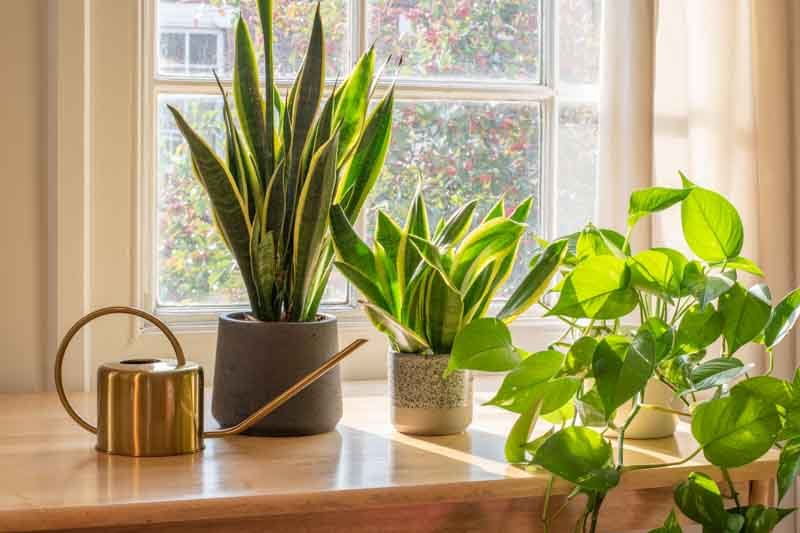
Here’s How to Get Your Snake Plant to Bloom: 10 Proven Tips
Provide Bright, Indirect Light
Why it works: Although snake plants can handle low light, they require strong, diffused sunlight to trigger flowering.
How to do it: Position your plant near a window facing south or east where it receives filtered sunlight. If kept indoors, supplement natural light with a grow light as needed.
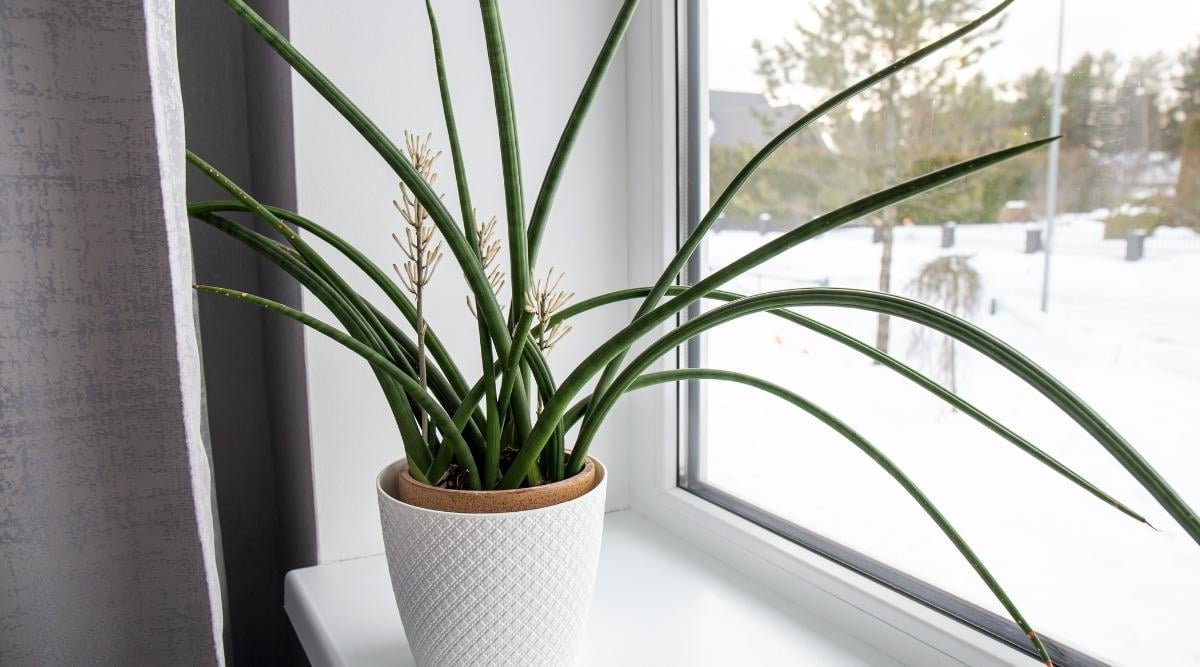
Use a Well-Draining Potting Mix
Why it works: Snake plants are susceptible to root rot if the soil remains soggy, which inhibits flowering.
How to do it: Employ a potting mix formulated for succulents or cacti that includes components like sand, perlite, or pumice to improve drainage.

Let the Soil Dry Out Between Waterings
Why it works: Snake plants do best with a dry-then-soak watering routine. Slight stress (without extreme dehydration) encourages blooming.
How to do it: Only water once the soil’s top 2-3 inches are thoroughly dry. Reduce watering frequency during the winter months.

Keep the Temperature Warm
Why it works: Snake plants are more likely to flower when exposed to consistently warm temperatures, especially during their active growing period.
How to do it: Maintain temperatures between 70–85°F (21–29°C) during the day and avoid exposing the plant to temperatures below 55°F (13°C).
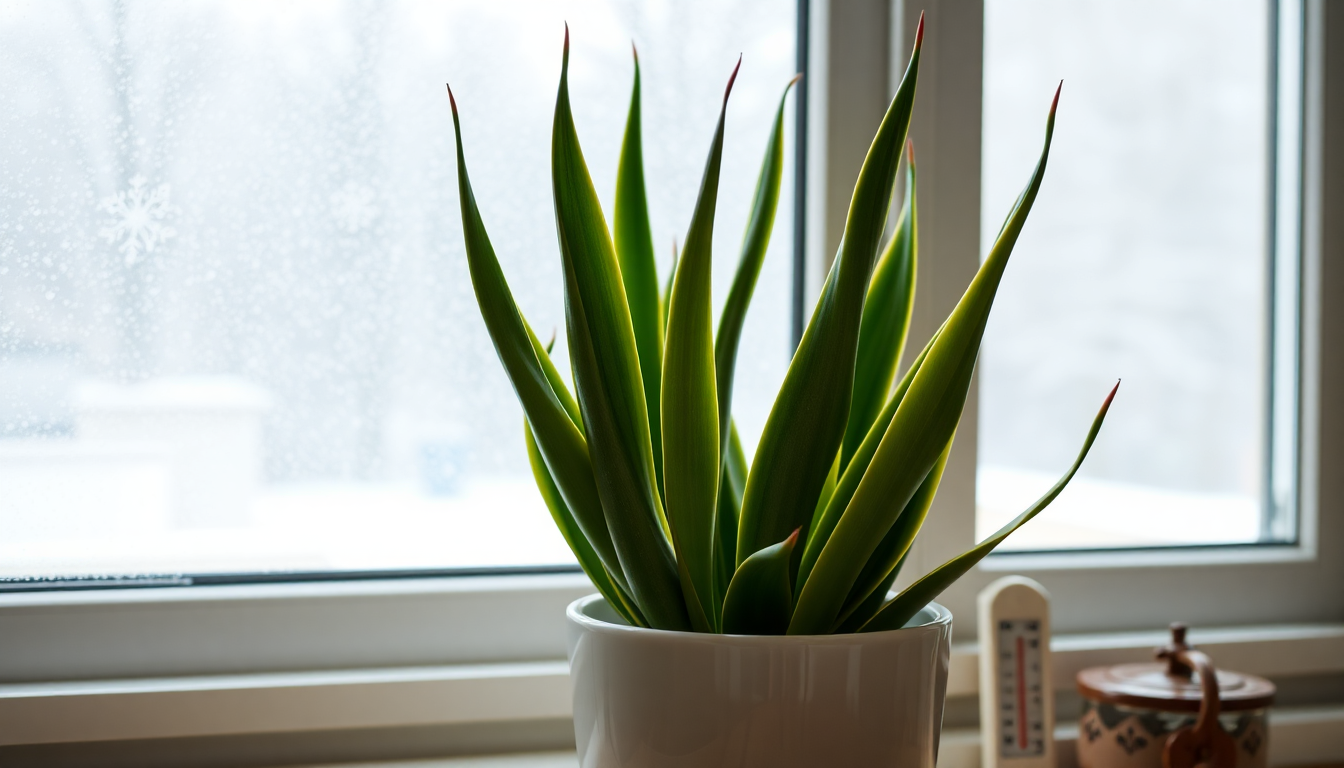
Provide a Slightly Root-Bound Environment
Why it works: Snake plants tend to bloom when their roots are somewhat confined within the pot; a slightly root-bound state redirects energy towards flowering rather than leaf growth.
How to do it: Instead of frequent repotting, wait until the roots are tightly packed within the container before moving to a larger pot.
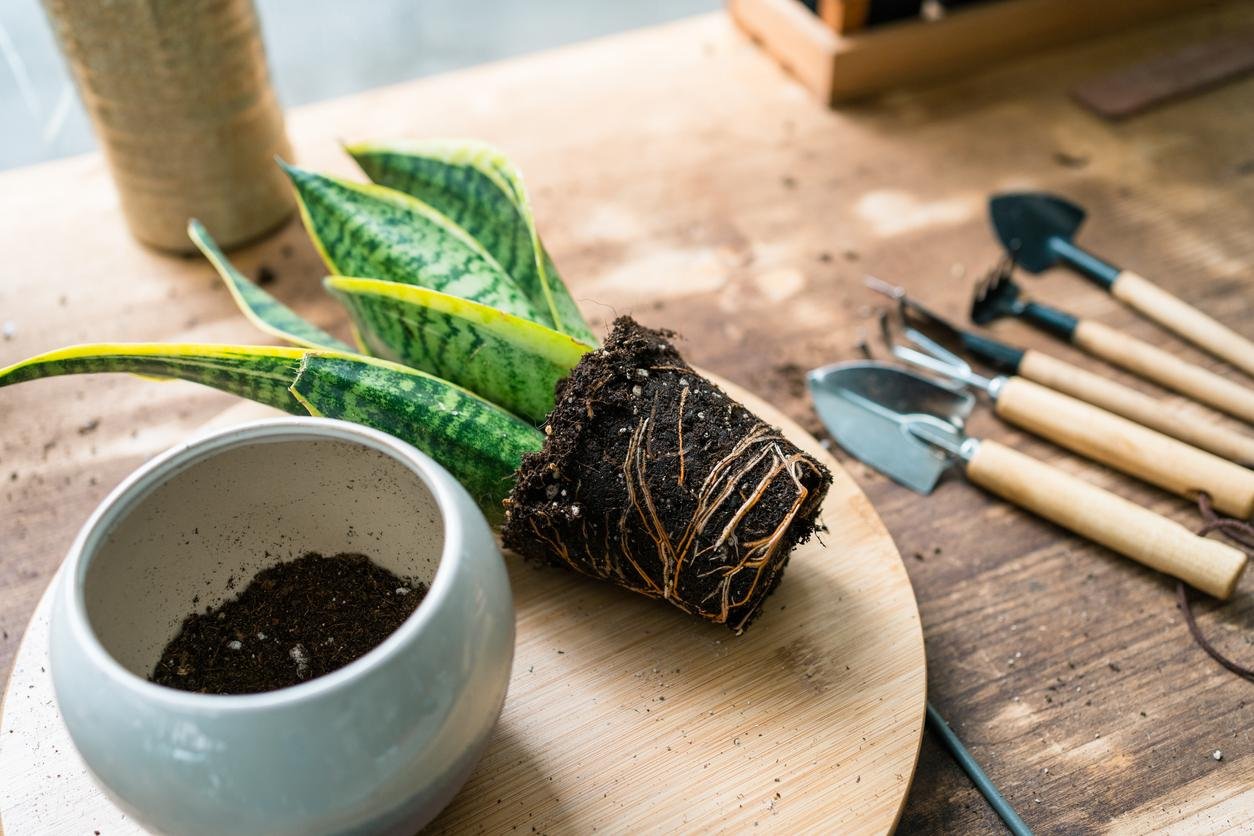
Use the Right Fertilizer
Why it works: Fertilizer that is low in nitrogen but high in phosphorus will promote flowering.
How to do it: Choose a balanced fertilizer like 10-10-10 or a bloom-boosting fertilizer with a higher phosphorus content (e.g., 5-10-10). Only fertilize in the spring and summer.
:max_bytes(150000):strip_icc()/choose-right-flower-fertilizer-1315828-05-4b3f292e7a834ad0824b3a9b9ed9db01.jpg)
Mimic Dry Season Conditions
Why it works: Snake plants often flower after enduring a period of dryness, mirroring their natural habitat in Africa.
How to do it: Decrease both watering and fertilizing in late summer and early fall. This induces a mild drought, simulating their natural bloom triggers.
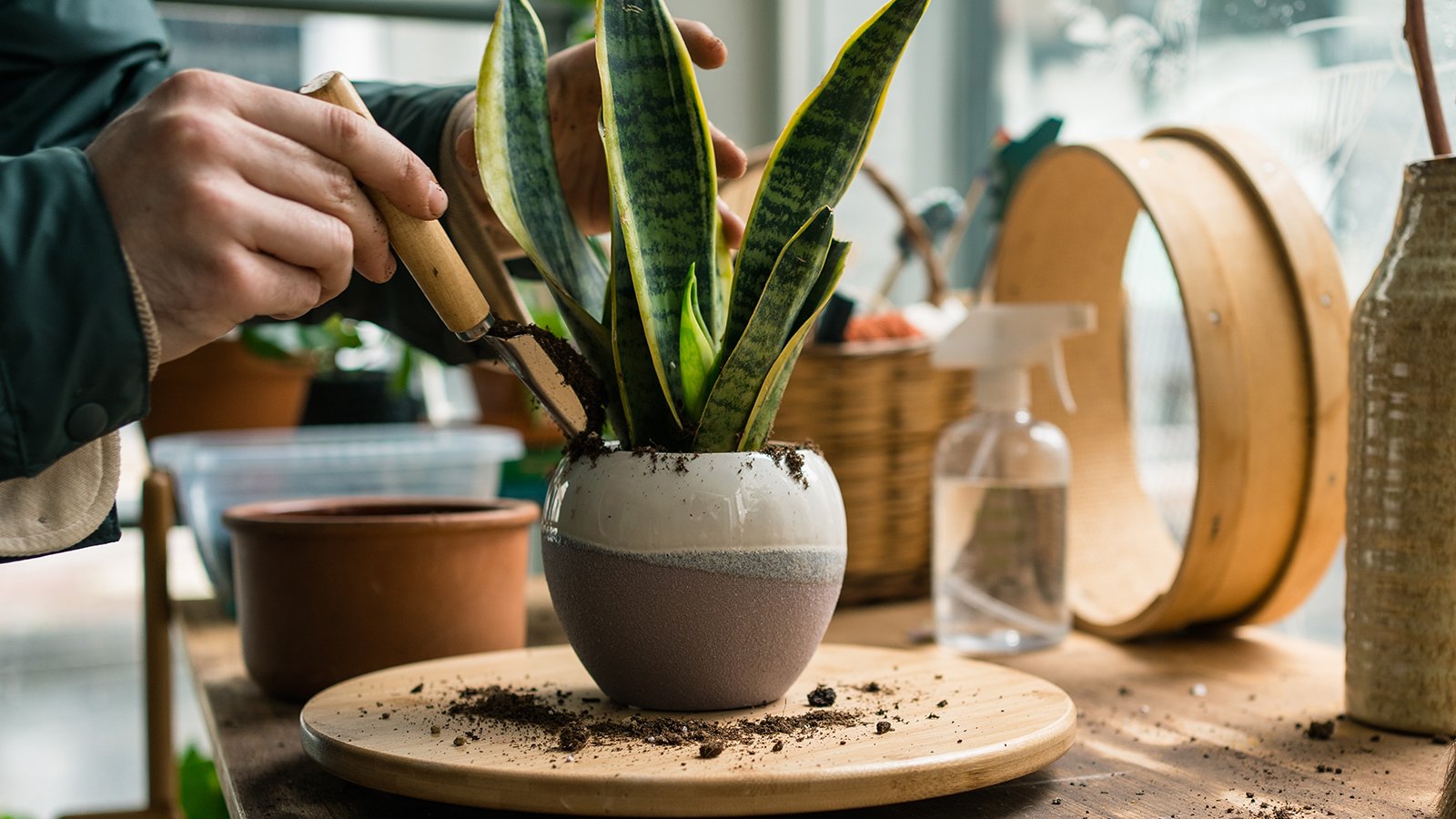
Ensure Proper Air Circulation
Why it works: Stagnant and humid conditions can predispose your plant to fungal diseases, which can hinder flowering. How to do it: Place your plant in a well-ventilated room, and avoid overcrowding it with other plants to improve air circulation.
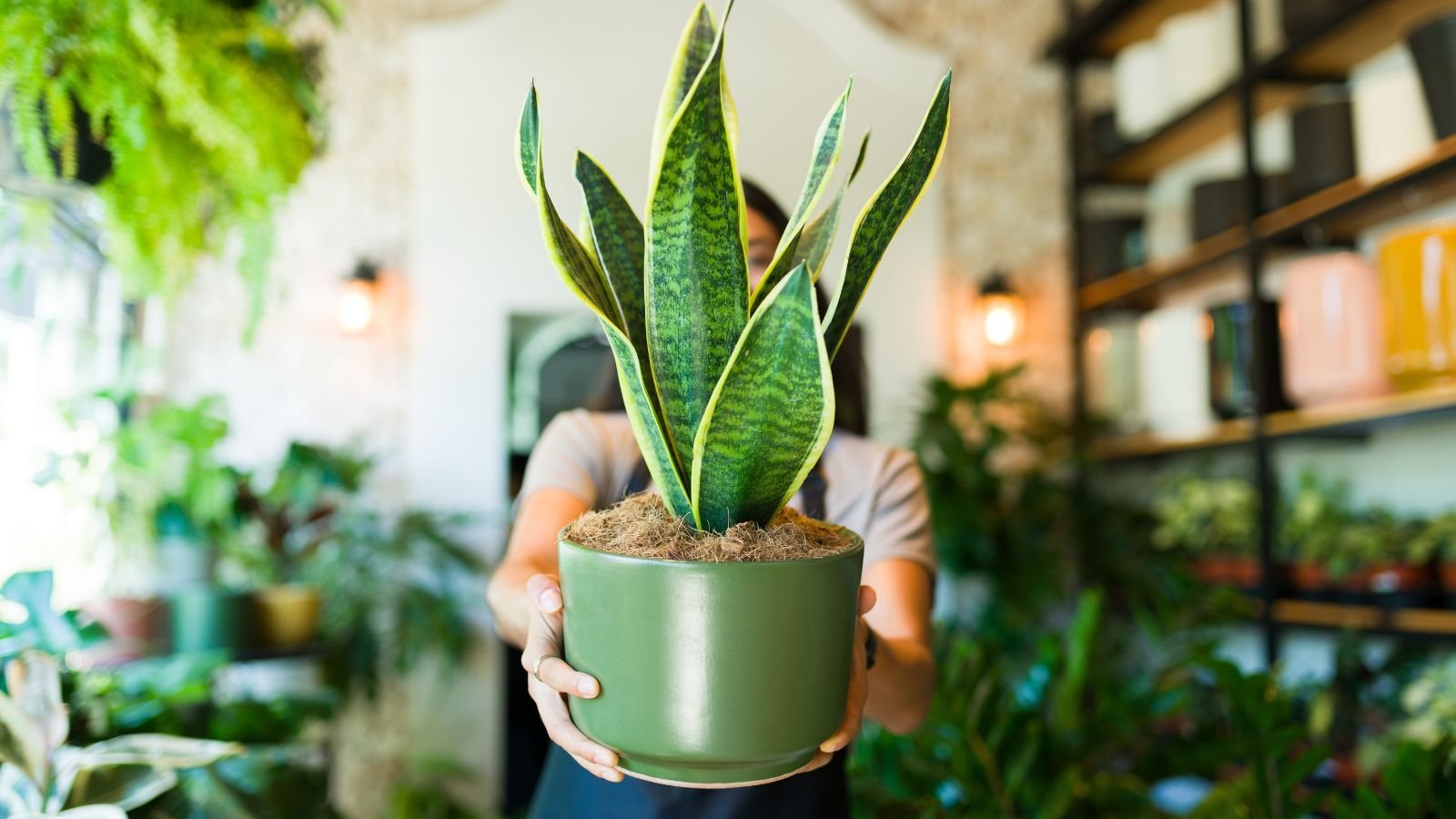
Give It a Period of Stress
Why it works: A subtle amount of stress can prompt the plant to enter a reproductive state, potentially leading to flowering.
How to do it: Occasionally postpone a watering session, but don’t allow the plant to become completely dry for extended periods. Maintain a slightly root-bound state and provide ample light.
:max_bytes(150000):strip_icc()/eight-houseplants-that-thrive-in-low-light-8-0922-2000-39845777816b4f1f8a49b6ef758ef35e.jpg)
Be Patient – Snake Plants Bloom Unexpectedly!
Why it works: Even with optimal conditions, snake plants can bloom sporadically.
How to do it: Consistently adhere to the recommended practices, and when conditions are favorable, your plant may surprise you with fragrant, night-blooming flowers.

Conclusion
Encouraging a snake plant to bloom can be a rewarding challenge that requires attention to its specific needs. By providing bright, indirect light, choosing a well-draining potting mix, and allowing the soil to dry between waterings, you create an environment conducive to flowering. Keeping temperatures warm, maintaining a slightly root-bound condition, and using the right fertilizer will also create optimal conditions for a bloom. Additionally, mimicking the dry seasons of the plant’s natural habitat and ensuring good air circulation can further promote flowering. Remember that patience is key, as snake plants may bloom unexpectedly with the right care. With diligence and a bit of luck, you may soon enjoy the sweetly scented flowers of your snake plant, transforming your indoor space into a vibrant oasis.

